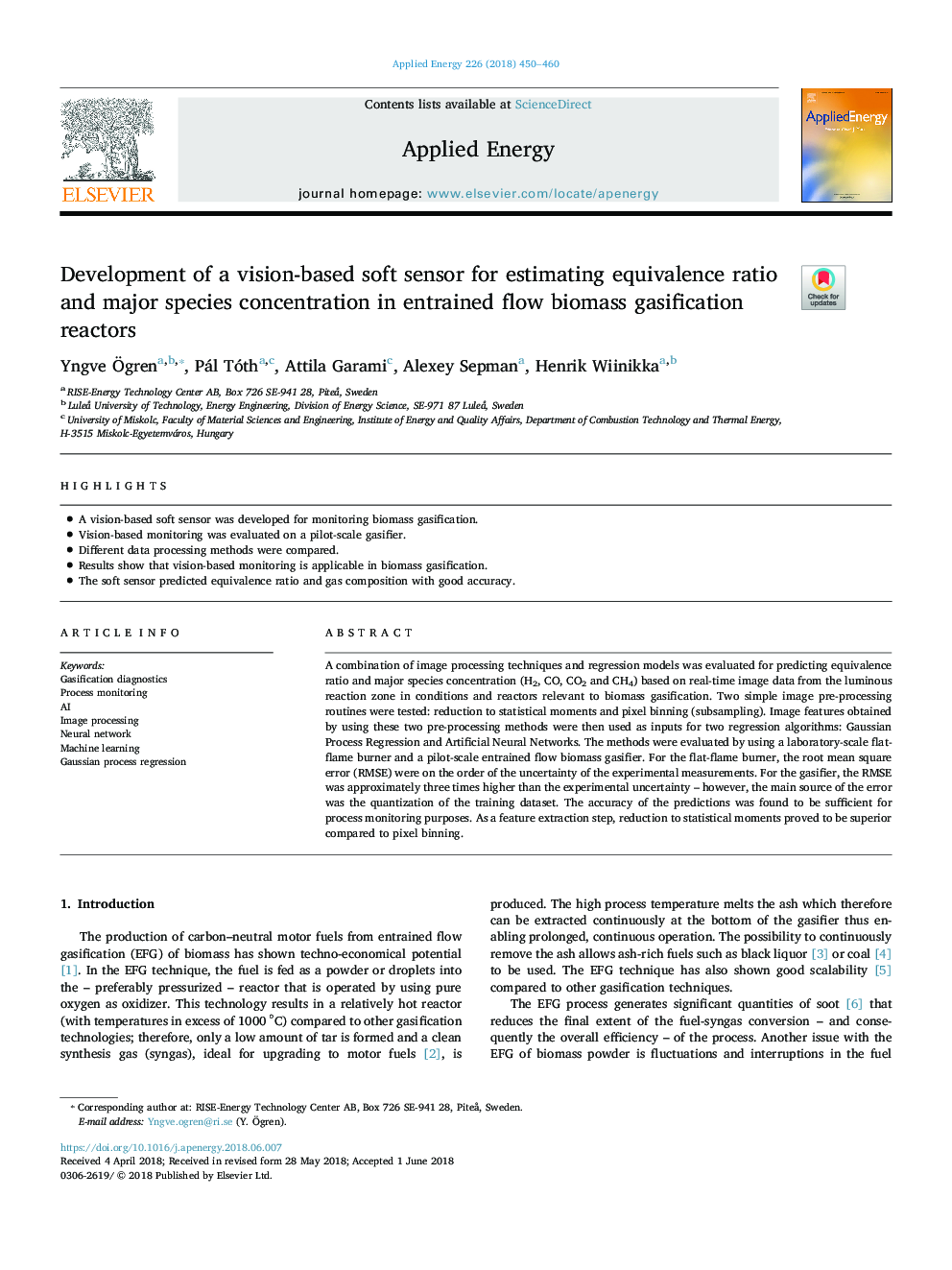| Article ID | Journal | Published Year | Pages | File Type |
|---|---|---|---|---|
| 6679757 | Applied Energy | 2018 | 11 Pages |
Abstract
A combination of image processing techniques and regression models was evaluated for predicting equivalence ratio and major species concentration (H2, CO, CO2 and CH4) based on real-time image data from the luminous reaction zone in conditions and reactors relevant to biomass gasification. Two simple image pre-processing routines were tested: reduction to statistical moments and pixel binning (subsampling). Image features obtained by using these two pre-processing methods were then used as inputs for two regression algorithms: Gaussian Process Regression and Artificial Neural Networks. The methods were evaluated by using a laboratory-scale flat-flame burner and a pilot-scale entrained flow biomass gasifier. For the flat-flame burner, the root mean square error (RMSE) were on the order of the uncertainty of the experimental measurements. For the gasifier, the RMSE was approximately three times higher than the experimental uncertainty - however, the main source of the error was the quantization of the training dataset. The accuracy of the predictions was found to be sufficient for process monitoring purposes. As a feature extraction step, reduction to statistical moments proved to be superior compared to pixel binning.
Keywords
Related Topics
Physical Sciences and Engineering
Energy
Energy Engineering and Power Technology
Authors
Yngve Ãgren, Pál Tóth, Attila Garami, Alexey Sepman, Henrik Wiinikka,
